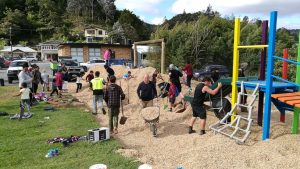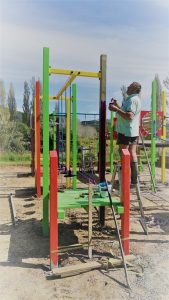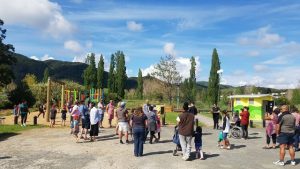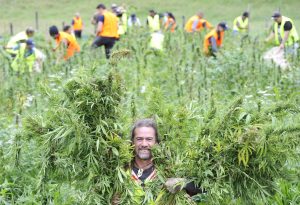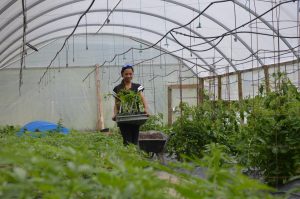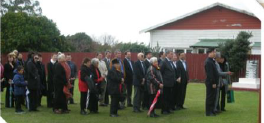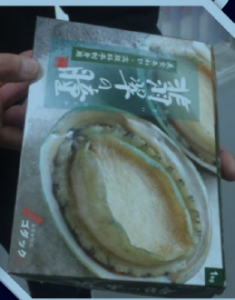Kidshub: Looking after our tamariki, whānau and community the CLD way.
Over the last two years the Christchurch Methodist Mission (CMM) Community Development team have worked alongside a group of whānau who are passionate about providing experiences and opportunities for their community. Together they have created the ‘Kidshub’ initiative in Linwood, Christchurch.
The Kidshub committee is now made up of 5 whānau leads and committed to providing low cost or no cost activities for whānau in the Linwood area. Building on the seed of an idea sown at a parents’ hui about five years ago, they have been busy organising community meetings and community events for their whānau, tamariki and the wider community.
With support from a CMM Development worker, a family worker from the Linwood Community Corner Trust, a Christchurch City Council advisor and Kim from the STEAM collective, the committee has organised a range of activities for the community during the school holidays. These activities all promote brain development and team building: they include art and craft, high tech days, maths exercises (using dragon cards in order to complete mathematical tasks in a fun way), engineering exercises, as well as bus trips to Victoria Park, Willow Bank and Spencer Park. Moreover, the committee also organised several community events throughout the year such as a kids market, Quiz night, neighbourhood BBQ, pizza nights and a light dance.
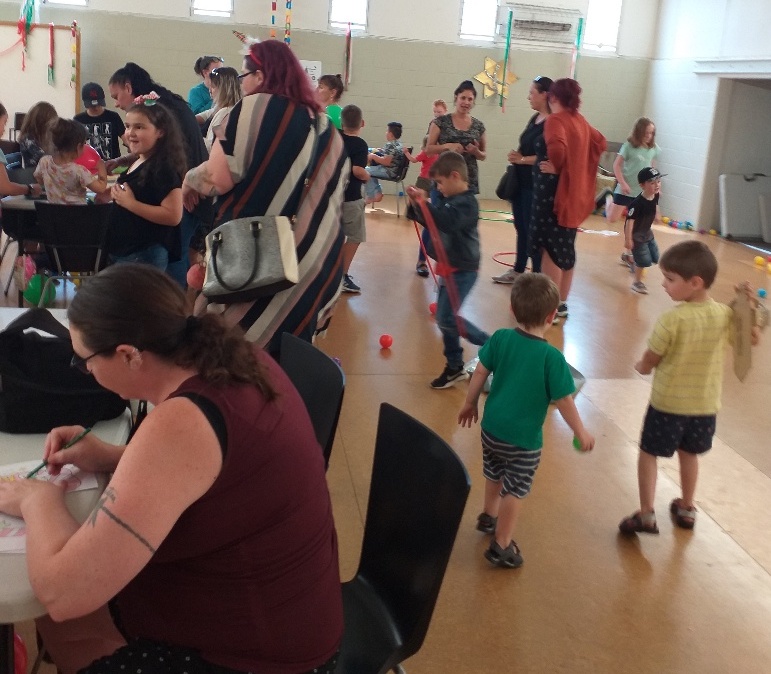
Fun for everyone at the Kidshub Activity Day 2019.
In February 2020, whānau and tamariki presented Kidshub to the Linwood Community Board, sharing their vision and goals: to give the tamariki the kind of experiences that they have been dreaming of, experiences that they wouldn’t normally have access to, and to enable whānau to share these experiences with their tamariki. The Kidshub committee envisions these experiences to come at little to no cost for whānau to ensure that tamariki have the highest possible likelihood of being able to participate.
Kidshub is all about fostering community connections in a neutral environment. A place to nurture whānau connections and to create a sense of belonging and bonding, with shared interactions and new experiences in a safe space for whānau to enjoy time together.
“We value the whānau being present at Kidshub so that these memories can be experienced and reminisced about together.”
Abbi, Kidshub parent leader
Key community-led learning from Kidshub:
In talking with the committee whānau about why they enjoy the Kidshub, they speak about the relationships they been able to build with the people whom they have met, and about having grown in confidence. The hope is that this will filter through to their tamariki to grow more confident and eventually become leaders in their local community. Kidshub is nurturing this growth and providing opportunities for leaders to grow.
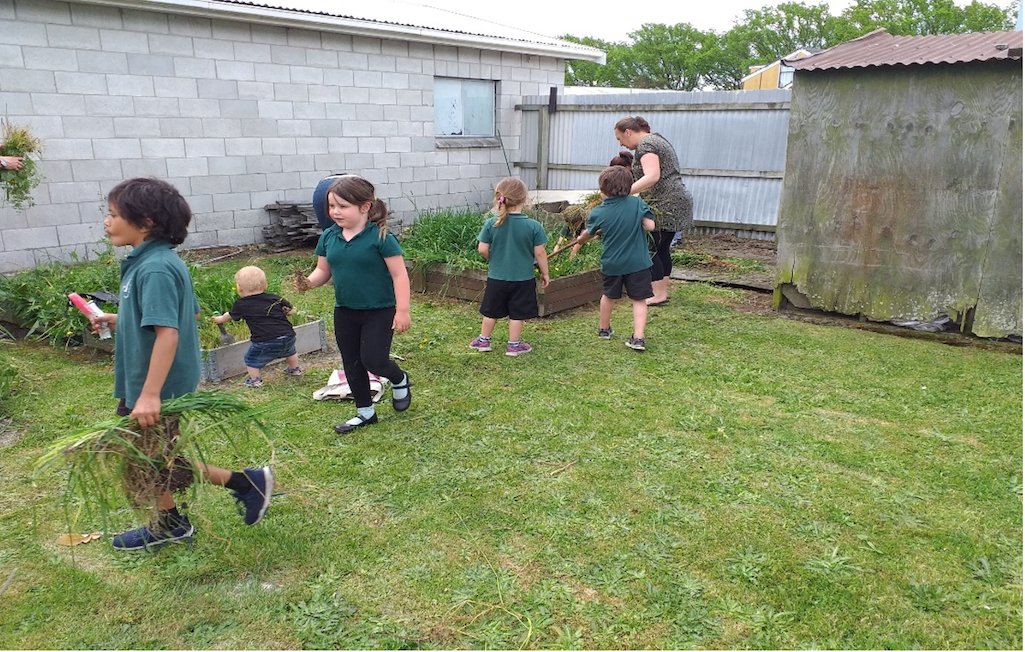
Gardening is a great way to learn for the tamariki.
The success of the Kidshub initiative points to the role that the following key principles of community-led development play in community projects:
The importance of place and a sense of belonging
There is a long term commitment to the mahi because the whānau feel a strong sense of connection to, and ownership of the places and spaces occupied. Working in collaboration with the neighbourhood and making sure everyone felt safe and respected, the committee cleaned up the section, removed rubbish, and turned it into a space that was safe and safe for everyone to enjoy.

Belonging, community and play are represented in the Kidshub logo.
Taking the time to listen and understand local voices
“We listened, opened up possibilities, we took our time because we didn’t know what would happen.”
Anne Gibling, CMM Community Development Worker
The committee dedicated a lot of time to building trusting relationships with the whanau in their community, and involved them in every step of the process, starting from scratch and finding resources needed to create a space where everyone felt heard, understood and had their needs met. It is from the shared experience and active listening and engagement that trust, respect and relationships can grow.
“The way we talk about others is important in shaping how we connect.”
Anne Gibling
Local leadership and learning by doing
The driving power behind Kidshub was the leadership of the four key women and their wishes for their children. Putting these ideas into action and reaching out for support where they needed it enabled them to build relationships with people in the wider community, even with those whom they never imagined they would be able to connect with. They were able to build trust through making the commitment to show up, listen and act on what they promised. Growing and learning along the way, there is not set-in-stone agenda, the whānau are shaping next steps as they go along – together with their community.
For more information on the Kidshub initiative, please email Anne Gibling, Christchurch Methodist Mission.
Done with being done to: Meremere’s journey to confident local leadership
Located about halfway between Auckland and Hamilton, just off the State Highway 1, the township of Meremere had struggled to revive its heyday’s spark after the Meremere power plant shut down in 1991 and many residents lost their employment. A sense of feeling forgotten and cut-off created frustration among the residents, and for several years, initiatives by different providers and ‘outside’ organisations had only temporary effects – one sentiment shared by the community was that they felt “done with being done to”.
Growing Collaborative Local leadership
With initial support from the local Council, the Ministry of Social Development, and the Department of Internal Affairs, a group of local residents took matters into their own hands and formed the Meremere Community Development Group in 2011. Thanks some initial grass roots funding like the Community Organisation Grants Scheme (COGS), the group gained momentum and led their first own community projects – these successes built the foundation and vision that then led to the establishment of the Meremere Community Development Committee Inc. in 2013.
Ben Brown, Secretary of the Development Committee, describes the committee as a core group of people that acts as “a sort of super-glue” for the community: “We look after the community-led, the community-based stuff, we help out with people’s community development aspirations.” Establishing this group and voicing the community’s hopes and needs were among the key first steps for the locals to step into their own power to activate change in Meremere.

“We are here for the community-led stuff, for helping to achieve our community’s development aspirations.”
Ben Brown
Read more
“The key thing has been growing a sense of empowerment within the community,” says Mary Wilson, who in her position as Community Advisor for the Department of Internal Affairs, has actively supported the Meremere community on this path.
“With community development, it’s important that supporters also know when to step back and let them forge their own path. Access to funding and resources is only the enabler – the community has to own it and be the driver. For a number of years, Meremere had been ‘done to‘ – they needed time and support to take the lead themselves and do things at their own pace. My role initially was to build their confidence and ability, i.e. the ‘how to’. And look at them now!”
“Funding is only the enabler – the community has to be the driver.”
Mary Wilson, Community Advisor, DIA
Pulling together strength and building a shared vision
Run entirely by a small team of volunteers, the Meremere Community Development Committee is now often found pulling together funding for community events, youth activities and leading projects to add to the town’s infrastructure.
Their first major effort was the design and establishment of a new multi-purpose community hall in 2015, which has been a crown jewel of achievement and a much loved new local asset.
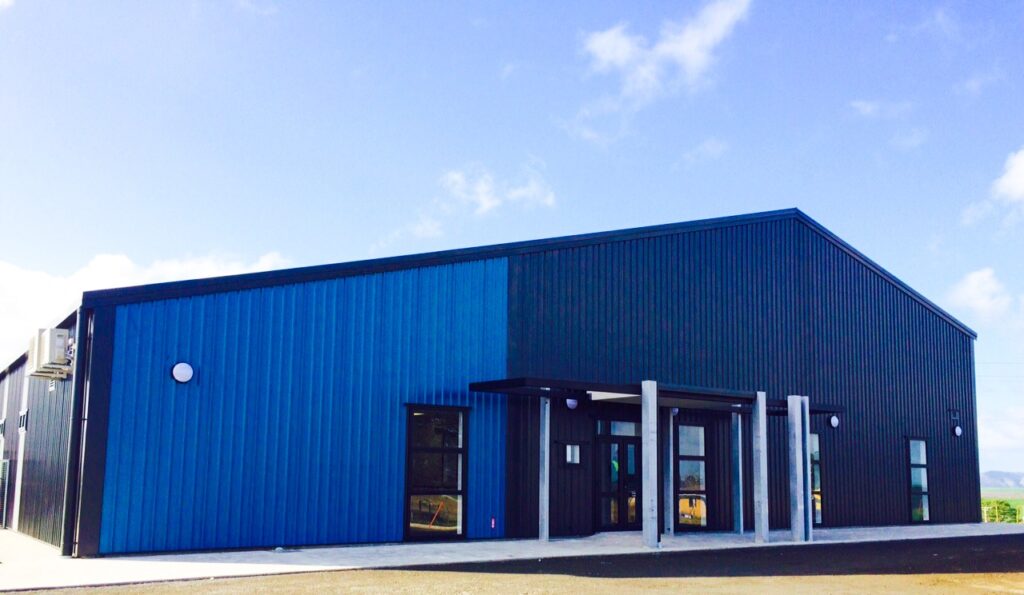
The purpose-built Meremere community hall.
Here, the DIA Community Advisor acted as a broker with the Council to bring the required funding together (Trust Waikato, the NZ Lottery Grants Board and the WEL Energy Trust gave their support) to support the community in developing their vision for their hall – which then drove the project.
“Our hall has been built by locals for locals – people have a lot of respect for it. It’s really an amazing resource for us all – I think any community would love to have a hall this grand,” Ben says of the sense of pride that the new hall has instilled in the community.
Going from being a community that felt left behind to an empowered one that takes matters into their own hands, has been a big learning curve for everyone involved, agree Mary and Sarah Gibb, Community Advisor for Community Waikato. “Now that strong relationships are in place and people know who to reach out to, there is so much more initiative to make things happen. People have learnt that it is ok to ask for help, and that they also have the ability to do things themselves.”
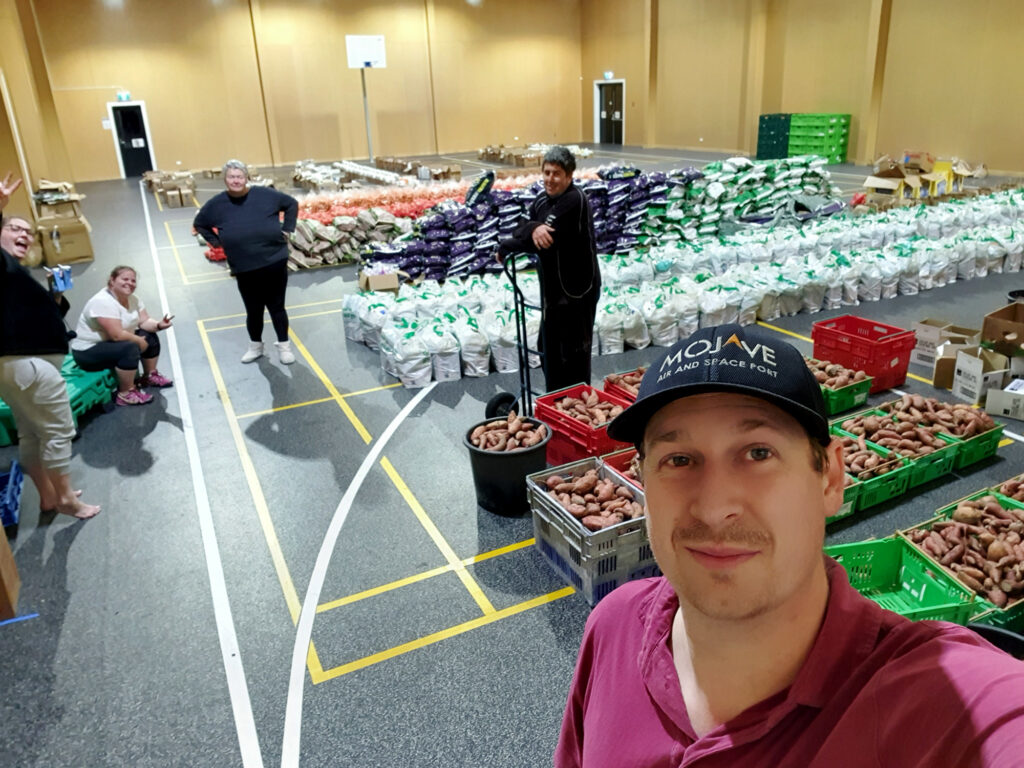
The community hall was transformed into a warehouse during Lockdown – the Development Committee worked together every day to help their community.
This doesn’t mean that there are no more struggles. Both Mary and Sarah point out that making sure everyone feels heard and involved in the community’s future remains a work in progress. “With new people come new ideas and, of course, robust discussions. This is healthy, and all part of the learning and growth,” describes Mary, noting that community development is all about the journey, not the destination.
“It’s about the journey, not the destination.”
Mary Wilson, Community Advisor
Learning by doing – and doing by collaboration
Sarah says that since the Community Development Committee’s establishment, all the agencies involved in supporting the community have welcomed the collaboration and collective achievements in Meremere. “What they achieved during Covid-19 this year was truly exceptional.” In a huge communal effort, the Committee managed to pull together resources from funders, agencies, charitable organisations like the Salvation Army and the regional kai rescue, as well as local businesses and growers, to deliver over 2,000 food and sanitation packs to their community. The fact that Meremere did this for Meremere was also noted with pride by many local residents.
Ben Brown and his fellow committee members did not wait for people to call out for help – they “just went ahead” to ensure their community remained safe and well. Asked about how they quickly pivoted from finding funders to build a skate park (which was made possible thanks to the support of Waikato District Council) to organising truckloads of food and sanitation supplies, Ben shrugs, “It’s a different kettle of fish. We were thrown in at the deep end, and I reckon we swam pretty well.”
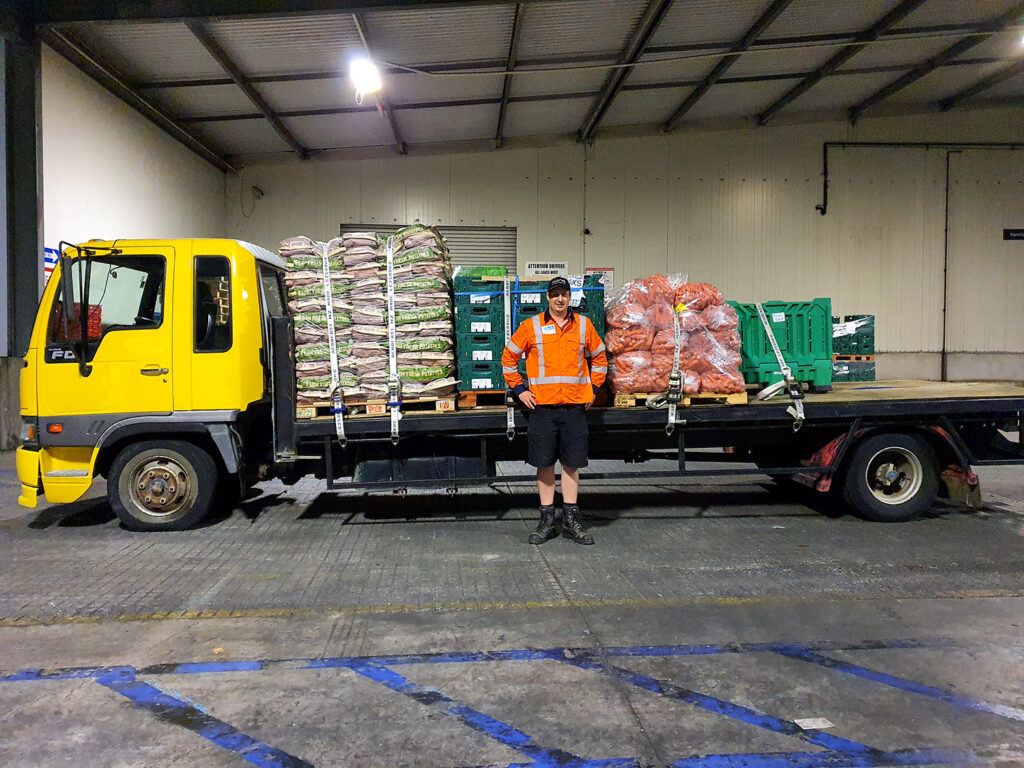
Ben Brown and his truck filled with supplies to sort into food parcels for the community.
And this attitude has not changed since the end of Lockdown.
“There are still a lot of people in genuine need for support here,” says Ben. “One of the great things that has come out of our efforts is that we now have a permanent Food Bank in Meremere. It’s run by locals for locals, all volunteers – people here have a lot of respect for it.” Also underway is a community food pantry – again, a network of different organisations was mobilised to pull together resources and workforce to make this happen: the TK Mens Shed built the actual pantry while the produce for it will come from the local community garden.
From immediate response to lasting change
“Going from an emergency response to establishing a permanent social service is possibly the best result for us,” reflects Ben about the Food Bank and Pantry. “There is always a silver lining. Everyone has become much closer through this experience. We now have a much better understanding of our community and who they are, and the whole committee is well known in the community.”
“Meremere will continue to see lots more change, but we will continue our community effort. It’s a wonderful place to live.”
Ben Brown, Secretary, Meremere community development committee
Looking to the future, there’s shared agreement that the “Meremere pride” is clearly returning.
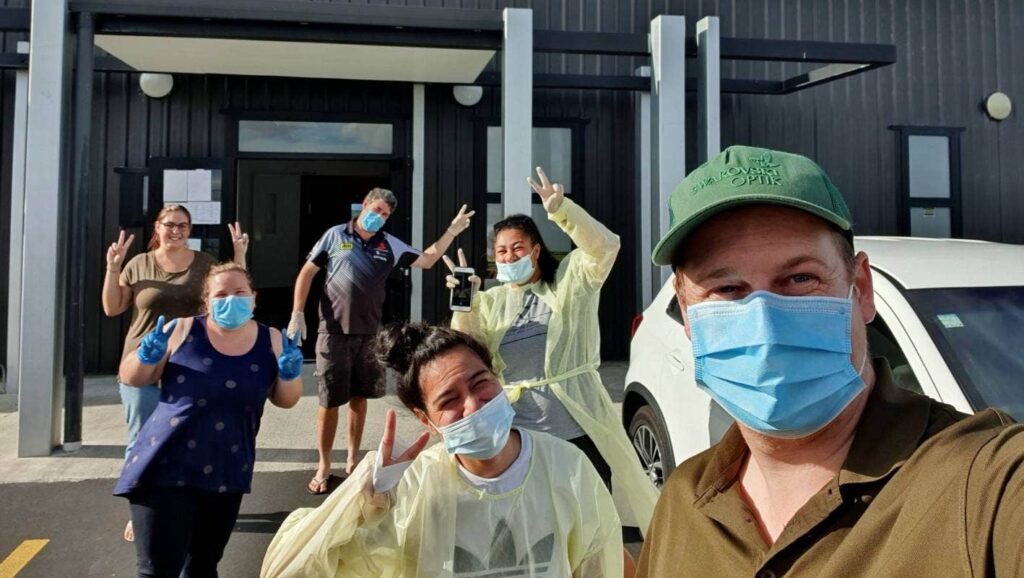
Ben Brown says that the silver lining of Lockdown was definitely that everyone in the community grew a lot closer together. “We are a tight-knit community. We know and help each other.”
“Meremere is in a much better position now, and more and more skilled people are moving to the community. This was evident in the opening of the new library last year: there was a great sense of pride all around – young families, dads pushing prams, the Mayor, everyone was engaged and was so proud,” Mary reflects on the Meremere community’s regained capability to drive their own success. “People are keen to leave a legacy for future generations.”
Ben agrees: “We will continue with our effort here as we are for eternity, until it’s not needed anymore. Meremere will continue to see a lot more change, but those hundred phone calls have been made now – we know we can get help when and where we need it. Meremere is such a tight-knit community. We know each other, and we help each other. It’s a wonderful place to live.”
Predator Free Wellington: Taking a collective leadership approach to build a social movement.
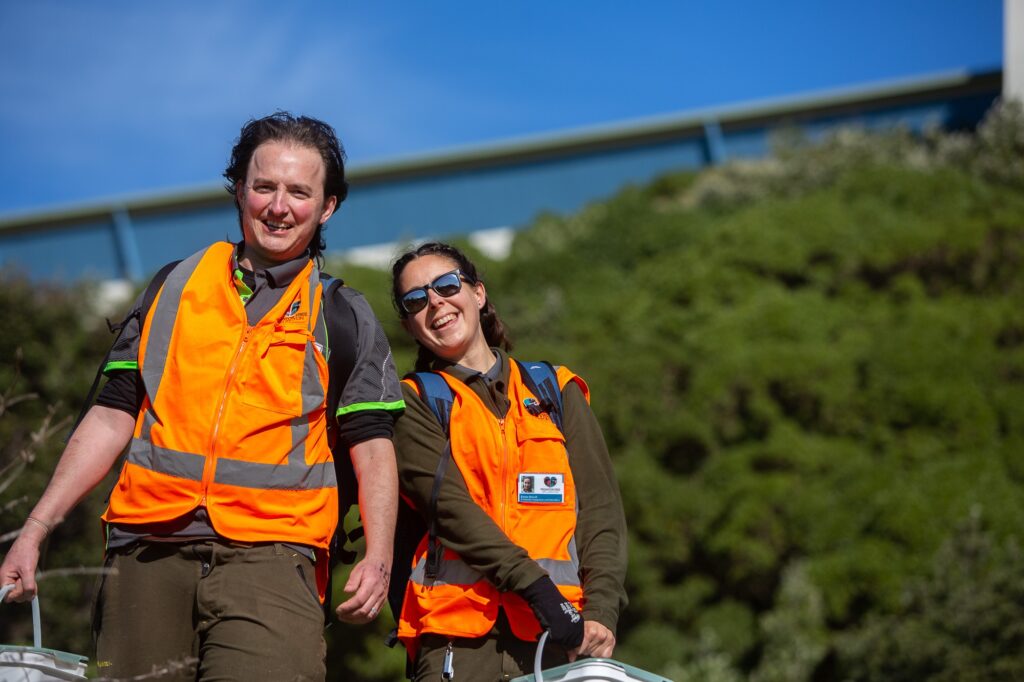
From the get-go, this initiative has been driven by the understanding that the vision of a predator free Aotearoa needs to be strongly rooted in, and driven by local communities. The ever-growing map of participating Predator Free groups, big and small, across the country is testament to the strength and diversity of the Predator Free movement.
James Willcocks, Predator Free Wellington
“People are our biggest challenge in conservation, but they are also our biggest chance. Because if we can have 212,000 pairs of eyes and ears on the case, that’s all the people living in Wellington, that’s the most effective protection network you could ever have. That has been a massive learning for us.”
Across Aotearoa, communities are taking action to enable the aspirational goal of Predator Free 2050. The aim is to completely eliminate the predators most dangerous to our unique biodiversity (rats, stoats, and possums have been identified to be the most damaging of introduced predators). Collaborative efforts are underway at national, regional and local levels to make change happen.
Building on shared local visions
“Taiao – environment at particular places” is one of seven key principles in the national strategy which is enabling ‘bottom up’ innovation and tailored responses. Predator Free Wellington is one of many initiatives underway, their goal to make Wellington the first predator-free capital in the world. They’re moving along at high pace and have nearly completed the first phase of their plan, namely eradicating pests on, and returning native birds to, the Miramar Peninsula. To achieve this, Project Director James Willcocks and his team have built a tight network across the resident community, getting everyone involved in setting up bait stations and traps across the Peninsula.
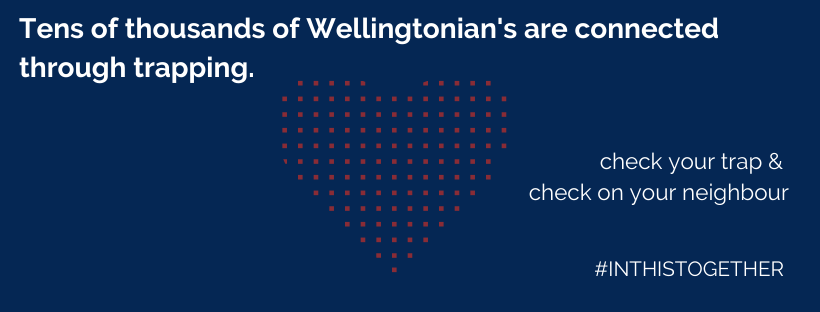
“We designed this project from the bottom up with the community at the centre. Our vision is for both our communities and our native biodiversity to thrive. You cannot have one without the other.”
Read more
Collaborative Local Leadership
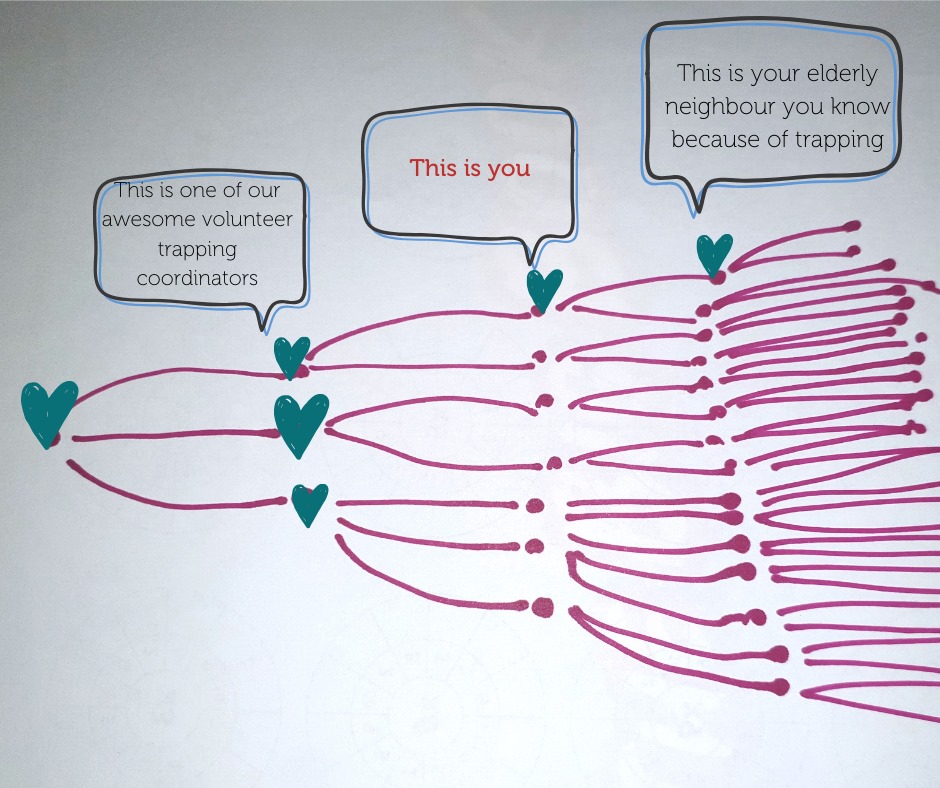
“We really want to create a sense of team and connection for the people. And it’s really worked, neighbours are talking to neighbours about this project, and it’s really driving this huge sense of commitment for the people of Miramar.”
James adds that his team has been absolutely blown away by how engaged the community has been in the project, proving that collective local leadership and the relationships behind it, are the key to success.
“We wanted to kick off a massive social movement. It is not about ‘doing to’ people in that sense – community leaders have stepped up and reached out because they want to do this, and we have then provided them with the expertise, resources and equipment – we’ve given them traps – and they have taken these back into their communities.”
To eradicate the pests, traps and bait stations have to be set up every 50 metres across the grid cast over the area. On Miramar, that is a minimum of 8,000 devices in an area where 20,000 people live:
“Our Engagement Field Officers have gone to knock on every door to talk to people about the project and by doing that, we have received 99% permission to set up traps on private land. This takes a great deal of trust – we cannot take this lightly: you really become part of peoples’ lives when you are visiting them every week. It’s huge social interaction and a huge opportunity for real social outcomes in this space.”
Diversity and inclusivity enable social outcomes
The ability and willingness to look beyond a traditional, westernised conservation model is a key factor in enabling participatory, community-led action. James stresses how much he has learned by working so closely with the diverse neighbourhoods in Wellington:
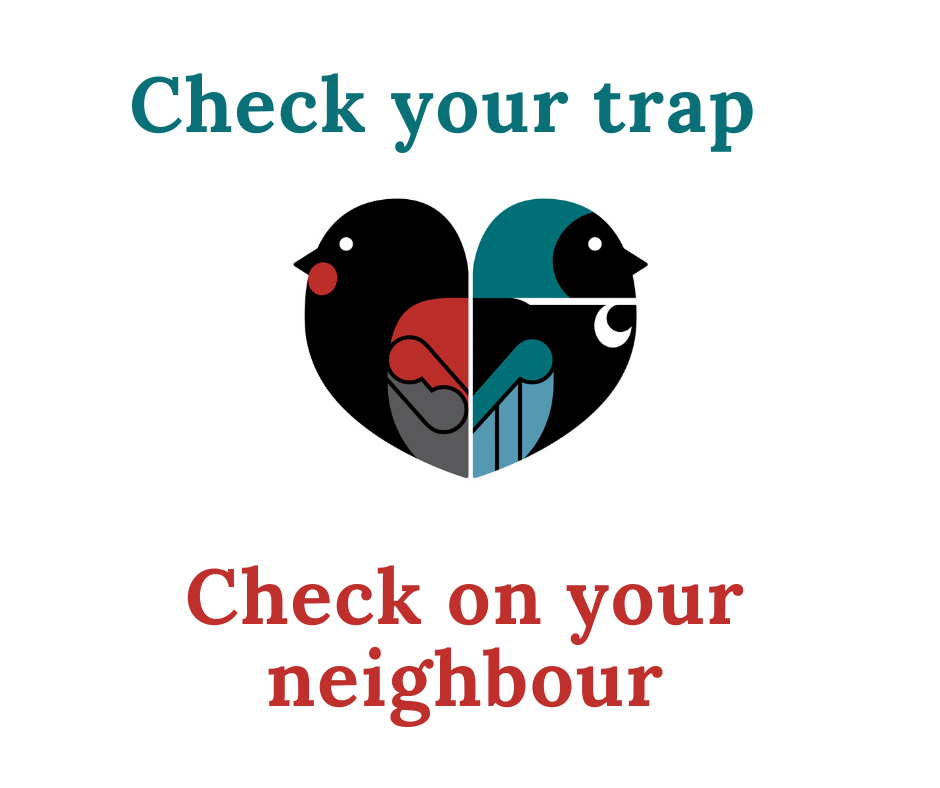
“Another massive learning for us has been working with marginalised communities or communities that can find themselves isolated, and not going in with a westernised, scientific approach. It is crucial to listen to different communities’ needs and perspectives to really get their buy-in to the project. We all care about the same thing but we will get there in different ways.”
James recalls an inspiring success story with “this fantastic guy who had spent a bit of time on the wrong side of the train tracks” some years ago. This person got involved in the cause because his family could not sleep as they had rats in their hot water cabinet. Having great success with their traps, this family then went on to play an instrumental role in linking James’ team with other neighbours and parts of Miramar who would likely not have felt included in a standardised, top-down approach.
Local action as part of the national vision
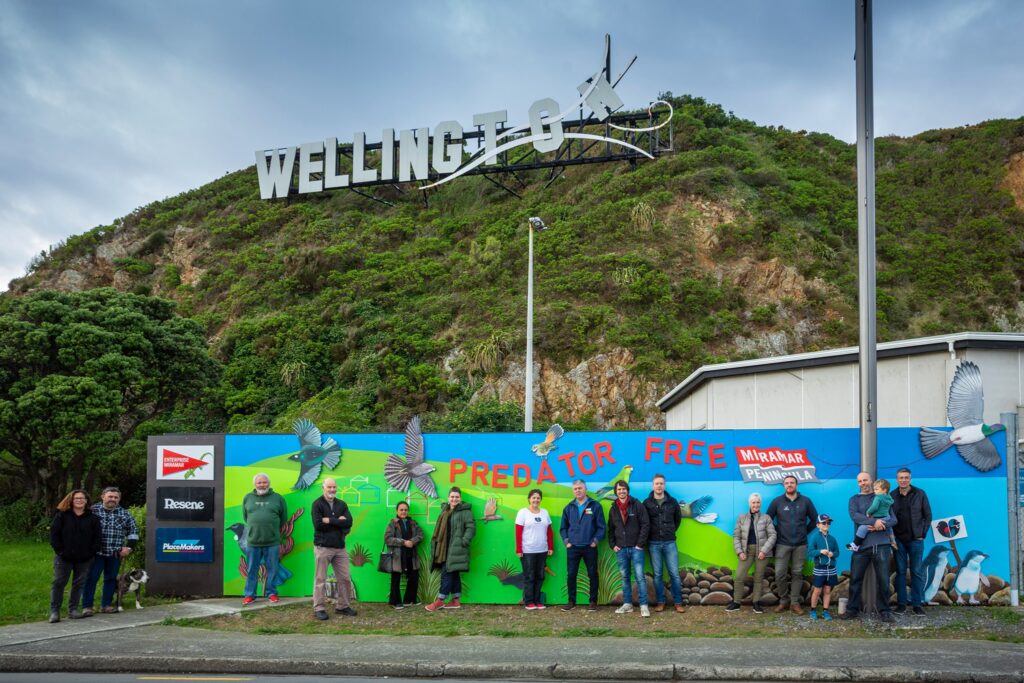
“Making Wellington predator free, that’s not my story to tell. It’s the story of the city of Wellington and its people.”
For a successful movement, James agrees that it’s all about thinking outside the box and to go ahead with holistic and broad approaches with the community at the lead, in order to find a way of working together that enables everyone involved. Having a clear goal in mind, and one that is close to home, also supports connection:
“Predator eradication is one part of the rich tapestry of conservation. Setting up a trap is a simple, straightforward action that people can take, and it links them to the broader global goal of preserving and conservation. Tackling big topics like Climate Change can seem impossible for the individual, but if the community can work together and focus on a tangible outcome through direct action, everyone can contribute. We are all part of nature, and everyone has something to contribute.”
Project C-19: Collaboration across boundaries
The Nelson Whakatū community is no stranger to a Civil Defence Emergency.
Hit by severe weather and floods in 2018, devastating bushfires in 2019, and now, Covid-19.
Within days, a new collaboration between community-led initiatives and organisations dedicated to helping the most vulnerable was formed. Project C-19 is a collaboration between Volunteer Nelson and Neighbourhood Support Nelson, both very active and visible community organisations in the region and funded by Nelson City Council .
Grow from shared local visions
The goal was clear; to support the organisations working with the most vulnerable in the community. To predict which needs might arise and be most crucial, the Project C-19 team developed a work exchange survey to help identify those gaps and needs, as well as to share their strengths, resources, and capacities. This evidence saw the organisations quickly self-organise and reassign their shared capability to respond directly to what they had identified: an increased need for food and housing support, as well as for strong and direct communication – not only between the organisations themselves, but also to the community so that the right source of support can be found for everyone’s individual needs and questions.
C-19 Project Manager Dawn Gauthier says she was amazed how immediately Nelson’s active support networks kicked into action:

“The organisations were so well equipped that within days, helping hands were reaching out to those who were stretched. The proactive and empathic approach of community organisations like Age Concern was impressive.”
READ MORE
Rather than waiting for people to reach out themselves, volunteers and staff at Age Concern Nelson picked up the phone to personally check in on older people in their network. However, what quickly became evident was that a stronger communication link was needed between those working ‘on the ground’ and those facilitating the government’s support measurements during the pandemic.

Project C-19 Communication channels.
Work with diverse people and sectors
To get a clearer picture of what decisions were being made, while providing a link back into this community’s needs and capacities, Project C-19 established a strong link directly into the Civil Defence Emergency Management team.
By participating directly in the daily CDEM Welfare team meetings, Dawn has been able to gather the necessary information first-hand and moreover provide insights into the day-to-day challenges local social service organisations were facing. It also enabled quick, accurate updates back into the community. The result being locally led responsive change across their organisations closing in on those gaps.
Learn by doing
The information is moreover proactively shared in Project C-19’s weekly newsletters, offering a valuable resource to the community and making CDEM’s mahi more visible and accessible.
In addition, Dawn and her team have organised a weekly, “short and sharp” Zoom-meeting with representatives of the CDEM team and Nelson’s community organisations, where questions and updates can be shared directly. Part of these weekly forums is a brief survey checking in on how everyone is feeling about their organisation’s workload, about what has been going well, and where people have noticed gaps.
Build from Strengths
Housing and food supply proved to be one of the biggest challenges during the Lockdown period. The amount of food vouchers distributed by the Nelson Tasman Pasifika Community Trust in the first few weeks alone was “massive”, says Dawn. With the economic impacts of Covid-19 expected to more fully hit our communities over the next few months, Dawn expects this trend to continue.
“Many people may have difficulty understanding that they need help. Some may need help for the first time, having never considered accessing a food bank or social services like mental health support until now.”
Dawn stresses that it is crucial to remove the stigma around topics such as unemployment, homelessness, and mental health problems, and to make access to help and resources as easy as possible.
A focus on positivity and hope paired with strong community networks and a whole lot of appreciation are just some of the strengths and driving force behind this initiative. The collective community responses like Project C-19 are spearheading stronger links between governing bodies, social services, community initiatives, and iwi-led responses such as Manaaki Twenty who are also working closely with the CDEM team, and the people in the community who need support. Dawn says there is hope and determination that these new ways of working will take a lasting hold.
“There is definitely a desire to not just go back to the way things were before, but to try and make things work better for a lot more people as we move forward.”
You can find out more about Project C-19 here, read their weekly newsletter here, and sign up to these updates here.
Walkways and Whitebait: Good things in Greymouth
It’s been seven years since a public meeting held by Grey District Council introduced two ideas: to enhance the local estuary, and to develop the adjacent lagoon into a welcoming park and recreation area.
The project that was seeded that night responded to the agreed task at hand: to come up with ideas to encourage more visitors to stick around in Greymouth, and as well as the buy-in from community members at the meeting, the project won backing from both the council and the Department of Conservation (DOC).
Part one – enhancing the local estuary – meant creating and planting more channels in the estuary to create a thriving whitebait habitat. Arguably the animate hero of the West Coast, this idea was heartily welcomed by locals and by DOC workers who have a vested interest in the preservation and regeneration of the whitebait population.
Work began on this part of the project in 2013, and by 2018 six kilometres of new channels had been dug in the estuary, and between ten and twelve thousand plants had been put in the ground.
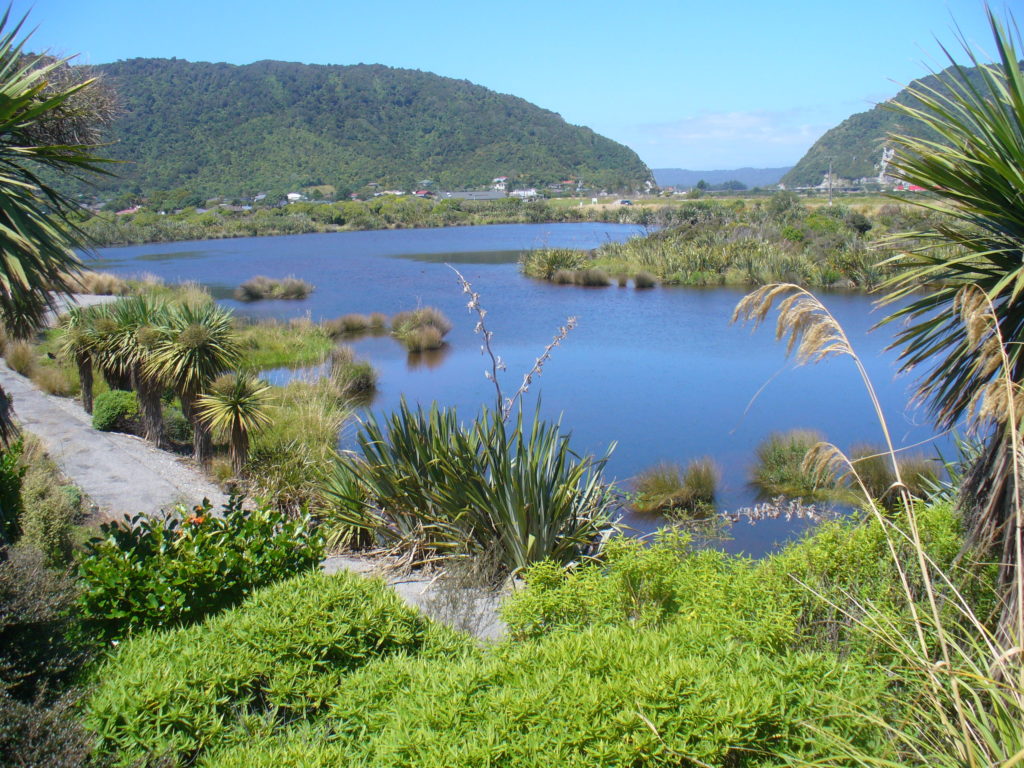
Rob Harrison, local volunteer and career land manager says, “now it’s a matter of keeping back the weeds to allow the native plants to colonise the estuary and watch the whitebait population grow.”
GROW COLLABORATIVE LOCAL LEADERSHIP
(click here to see IC resources on Grow Collaborative Local Leadership)
Rob joined forces with fellow volunteers to establish CASRA (Cobden Aramohana Sanctuary and Recreational Area) society after the council coordinator’s funding was stopped.
“When the funding dried up, we decided to make a little incorporated society CASRA, to facilitate the project and so that we could have the ability to apply for funding. It’s worked well because DOC and the council was impressed with our efforts.”
“We became the liaison agency to connect the Grey District Council and DOC. There was a plan which had been drawn up and it was essentially our job to see it through.”
CASRA is a mix of passionate locals who have a wide range of skills from landscaping to whitebaiting, and just generally want to lend a hand on the project.
BUILD FROM STRENGTHS
(click here to see IC resources on Build From Strengths)
“We were lucky at that first meeting. We had people in the room whose skills really suited this project. Connections to DOC, experience in land management, landscaping and eco-systems… it became a situation of building on the skills we had in our group.”
Part two – redeveloping the beautiful Cobden Lagoon, a stone’s throw from the estuary – was commenced in 2014.
“The council had begun planting the lagoon around ten years ago after a rubbish dump, on the ocean side of the lagoon, was closed in 2008. We then became involved focusing on planting and developing a path around the lagoon.”
SHARED LOCAL VISION
(click here to see IC resources on Shared Local Vision)
Although CASRA has just ten regularly active volunteers, there was great interest from locals to lend a hand, and by working closely with the council and DOC, extra labour was brought in from Conservation Volunteers NZ.
The numbers go some way to demonstrate the scale of this project:
- $21,000 spent on plants and contract planters
- 600 hours of volunteer work
- 4,000 trees, hebes and flaxes planted with plans to plant more in the coming years
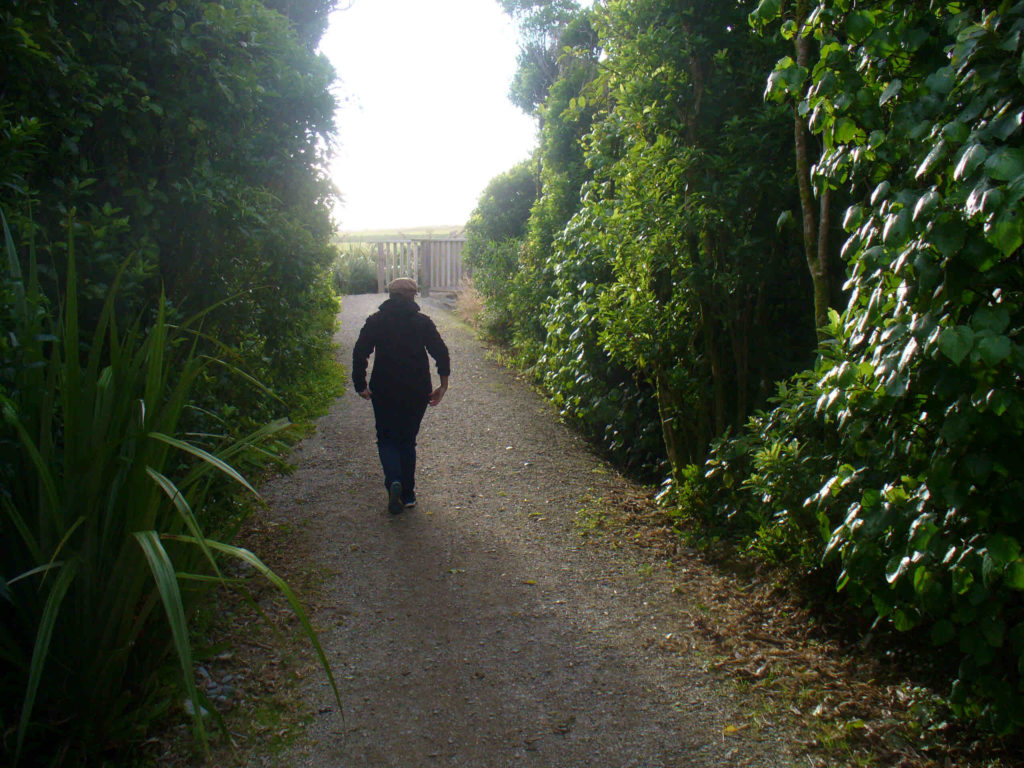
“The maintenance side of things kicks in now. Weed clearing, path making and predator trapping to name a few. The introduction of plants has naturally evolved this lagoon into a bird sanctuary and overall it’s a beautiful looking place.”
Harrison and his wife live very near the project site so it became a personal investment to see their own place be developed for future generations.
“We won’t be around to see the trees grow too tall of course, but it’s really turned into a lovely place to go for walks and see the wildlife.”
LEARN BY DOING
(click here to see IC resources on Learn by Doing)
“To say this project was carried out without hiccups wouldn’t be accurate! What’s a project if it doesn’t face delays and speed bumps, after all. But I think you have to make allowances for that and be prepared to work with what you’ve got, Especially within a small community as we have. I have definitely felt a bit frustrated sometimes…. If you want to make progress you’ve got to focus on the positives.”
On a personal level, Harrison’s involvement in CASRA and this particular project has meant he’s felt a sense of being able to give back to his community by sharing his skills and knowledge, as well as offering some of his free time now that he’s retired.
To see the significant rise in the number of people who stop to enjoy the surroundings has been reassuring for everyone involved.
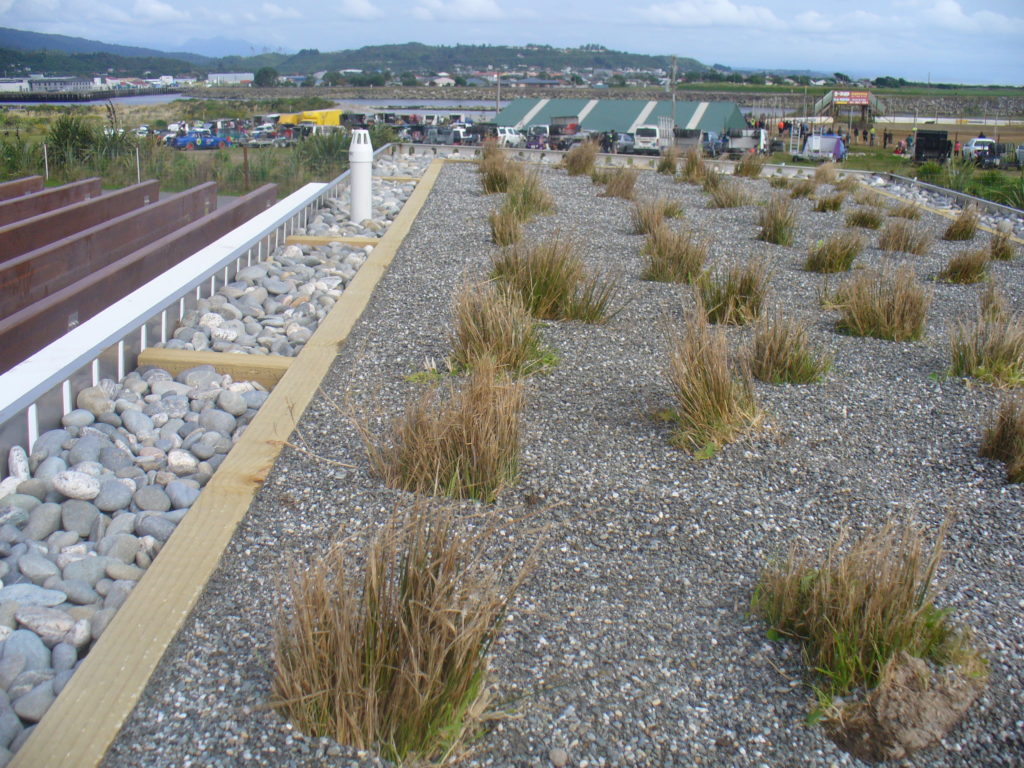
“The combination of walks, water, native plants, birds and whitebait is drawing in the visitors, and that was our original goal. It might have taken a while to get here, but it goes to show that if you can retain a sense of humour and some patience, you’ll get there. It’s worth it in the end.”
Cobden Lagoon is located off the main state highway through Greymouth and is well worth a stop. More information about this project and its whereabouts can be found here.
For resources collated by Inspiring Communities that relate to the processes and principles identified in this story, we encourage you to visit our website.
Whangaroa Community Playground
The residents of Kaeo – a town of 450 in the Far North – have come together to bring colour and play into their community. When Eljon Fitzgerald took his two year old granddaughter to the town’s playground only to find nothing that she could play on, he decided to take action into his own hands. The local community came together in force to back the project.
Building on their existing strengths and assets, the project team tapped into many different opportunities to bring the dream of the playground to life. Using the Whangaroa Community Trust to secure funding, they received support from the Far North District Council (FNDC) and a local fundraising group called Kaeoannes to purchase a secondhand playground with the help of the Kerikeri Lions Club.
To locate the shortfall, residents and local businesses pooled their resources to create a raffle that raised the final $5000 towards the installation of the playground. The rest came down to the hard work of community members, like Bruce Mills, his daughter Georgia, and Eljon who spent hours painting and sprucing up the old playground. In a fantastic show of community spirit over 100 people answered the call to help lay and spread the bark FNDC had supplied.
What was once just a climbing frame and two swings is now a multi-activity playground for kids of all ages. Putting local initiative at the heart of this project has resulted in the playground becoming a central hub that has brought the whole community together.
“Kaeo has been buzzing with activity and not a day goes by without the playground area being full of kids and parents.” – Eljon Fitzgerald
Shared local visions driving action and change
Thanks to the vision of community members, the support of local businesses and community, and the guidance of the FNDC recreational services division, the collective desire to change a rarely-used area into a vibrant community playground and recreational area for families has been realised.
Building diverse and collaborative local leadership
The project was led by motivated community members and the Coordinator at the Whangaroa Community Trust. This mixed leadership allowed the voice of the community to remain strong in decisions while creating an official pipeline to essential resources and permissions necessary to be able to build the playground.
Using existing strengths and assets
Other than the installation of the playground, which required professional services, the entire project was facilitated through the work, support and donations of community members.
Kaeo may be a small town but we have all the skills of larger towns and cities within our community. A strong volunteer workforce including young and old, tradespeople, parents and retired folk who have given freely of time to achieve this result. – Angela Norman, Community Coordinator.
The installation of the Whangaroa Community Playground is just the beginning for this small community who have been inspired by the changes they have been able to make for themselves. The initial leadership group plans to form a ‘Friends of the Playground’ group in which the goal would be to continue to build a welcoming hub for all visitors.
With the aim of becoming the coolest town playground in the far North, they are setting their sights high. They hope to develop a family area that offers picnic tables, BBQs and shade and have future dreams of a skate path and a flying fox.
The determination of the residents of Kaeo to build a place of fun and exploration for their youngest members has illuminated the necessary steps for change, allowing their vision to grow and flourish and creating lasting impact within their community.
Hemp venture places community at the heart of business
Hikurangi Enterprises, a charitable company based in Ruatoria, is placing local employment and environmental sustainability at the centre of a hemp growing venture that aims to build economic development in the Tairāwhiti region.
As a business enterprise, they offer a strong example of how local businesses can incorporate community-led development principles to enhance well-being, engagement and ownership within their communities.
Hemp is the same plant as marijuana but with low-THC (tetrahydrocannabinol) so it doesn’t carry the psychotropic effect. It is increasingly sought after for its medicinal properties, the market this venture is capitalising on. With the perfect climate and a wealth of existing local knowledge and expertise, hemp offers a high value alternative to marijuana for the region.
Using existing strengths and assets
There are 15 local growers already involved in the venture with 300 years growing experience between them. They are the experts in the field and have provided the tools and resources to trial varieties and develop a premium quality crop.
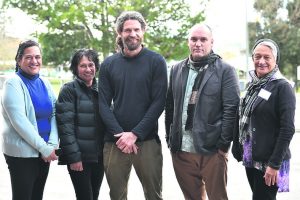
Viewed positively by the local community, many landowners have offered blocks of land for growing hemp when the venture is ready to scale up.
“People are willing to give anything a go that has some real potential and that is aligned with community values. This is seen as consistent with the values of whānau and landowners in a way that other opportunities [such as oil and gas exploration] aren’t.” – Manu Caddie of Hikurangi Enterprises
Working adaptively, learning informs planning and action
Flexibility is essential to this venture as the social, political and legal landscapes around growing and selling hemp are constantly shifting. It is a brand new industry in Aotearoa that is highly regulated. These factors make investors cautious.
After a successful crop trial in 2016, Hikurangi Enterprises is in the process of strengthening local and international business relationships, working through complex regulation laws and market testing their products.
There are many hurdles yet to be faced but the community remains confident in the venture. They are developing a business model that encourages local community investment and protects growers so that they can collectivise and have ownership over the production space.
“We’re trying to be community-led and owned in real ways. That includes making sure the community has tangible ownership not just philosophical.” – Manu Caddie
Even at these early stages, the positive community impacts are visible. Hemp growers can work with the plant they know and love without risking arrest and time away from their families. They are seen as making positive contributions to whānau well-being and the development of the region. Alongside the obvious economic benefits for the area, these shifts in perception allow the flourishing of a strengthened and empowered community.
“Locals who had been seen as dope growers are being seen as productive contributors to local economic development and hard working horticulturalists. They are sensing that change already.” – Manu Caddie
To find out more about the work of Hikurangi Enterprises visit https://hikurangi.enterprises/.
Blackball: Embracing Opportunity
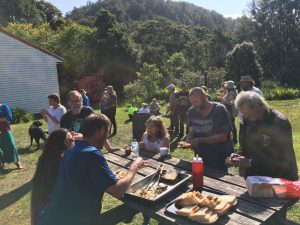
The town of Blackball is stepping up to meet the opportunities predicted to come from the new Paparoa Track and Pike29 Memorial Track between Blackball and Punakaiki. The latest addition to New Zealand’s Great Walks, this track is expected to attract 6000 people per year when it opens in 2019.
Since the announcement of the new track in 2015, the residents of Blackball – a town of 300 – have spent the last two years working with the Department of Internal Affairs (DIA) knitting together a unified outlook and building strategic relationships with national and local authorities. Determined to keep the vision and values of the local community at the heart of decisions for the town as tourism grows, Blackball has entered into a partnership for community-led development with DIA. With DIA offering five years of support, the residents plan to use this opportunity to achieve significant community-driven change in their town.
“The partnership is less about funding and more about working together as a community with common goals and aspirations” – Cynthia Robins, member of the Steering Committee
Building diverse and collaborative local leadership
A volunteer Steering Committee formed after an inspirational workshop co-hosted by Inspiring Communities and neighbourhood-building champion Jim Diers. While leaders in their own right, they will be the first to say that it is the community that leads change in Blackball. The Committee forges strategic relationships, tackles roadblocks to progress, and brings the community together when it’s time for action.
Using shared local visions to drive action and change
The residents of Blackball see their community as their greatest strength. They use town meetings, postal and online surveys, door-knocking and anonymous voting ballots placed in local businesses to ensure that every single resident of the town has an opportunity to put forward ideas and participate in decisions. At no point in the idea development or decision-making process is there a single leader or group making decisions on behalf of everyone else.
“We try very hard not to be a benign dictatorship. We open the dialogues with the right organisations and advocate for the community of Blackball to make things happen” – Cynthia Robins
Many people, groups and sectors working together
For a period of four months, the Committee met every week with representatives from DOC, DIA, Development West Coast, Grey District Council and Tai Poutini Polytech, forging strong alliances and planning a community open day. Roadblocks are a natural part of any development project and these relationships are key to gaining outcomes.
Over the last two years, the residents of Blackball have become fully engaged in being part of the change they want to see in their town.
“The community leads. The Committee is just there holding all the different strings but it is the community that pulls the reins” – Cynthia Robins
Embracing the new opportunities offered through their partnership with DIA, the town is determined to learn from the support they will receive over the next five years so that they emerge fully empowered to create the changes they want for their community.
Ōpōtiki using their taonga to harbour a dream
Decades ago, some Whakatōhea kaumatua advocated farming the sea, and rebuilding the marine based economy which the Iwi had been renowned for pre-confiscation. At the time there was scepticism – maybe the vision seemed impossible….
Ōpōtiki now has the largest offshore marine farm in New Zealand and local iwi, Te Whakatōhea is the majority shareholder. Over the past 20 years Te Whakatōhea and partners have co invested in research and farming infrastructure to harvest spat and grow mussels. Both are now being produced at extraordinary rates.
It’s now time to fulfil the plans to develop the Ōpōtiki Harbour so that both the farm can be serviced and the mussels processed locally – generating local jobs and wealth. Regional commitment to investment is lined up, awaiting government commitment so that construction can commence.
Ōpōtiki, an eastern Bay of Plenty sea side town resident to nearly 5 thousand, was once considered one of New Zealand’s most deprived communities. The town has had heavy unemployment, decreases in population, and a large dependence on government benefits. Increasingly both locals and outsiders are perceiving it differently. They’re beginning to believe that benefits plus seasonal work in kiwifruit need no longer be the only option for a significant portion of the population.
Through their joint leadership, Te Whakatōhea and the Ōpōtiki District Council have integrated iwi and community-led development approaches to empower their community’s transformation.
Shared local visions drive action and change
Ōpōtiki had a desire for change, they envisioned a community that could be more sustainable: Iwi saw opportunity for economic growth congruent with their values and aspirations, that would lead to job opportunities for their people; the Council saw potential in a sustainable seafood industry, along with other industries enabled by a viable harbour, which would all support the community’s wider vision for change.
Using existing strengths and assets
UTe Whakatōhea has a strong connection to the sea. Traditionally known as enterprising seafarers and coastal traders, their history is closely linked to the ocean. The community saw their vision as an asset, one of great value in rebuilding a vibrant local economy and wellbeing. Layered over this was Ōpōtiki harbour. It had been developed in European settlement times for whaling and coastal trading, and was once a busy, thriving harbour – a connection to both European and Māori heritage.
Many people, groups and sectors working together
MTe Whakatōhea, settled on their vision to develop the marine farm, reached out to multiple groups and organisations to assist. Ōpōtiki District Council, with community support got behind the initiative, taking leadership to develop the Harbour. Getting the marine farm underway and confirming the viability of the harbour development has been complex. Processes with community, iwi, multiple central and local government layers, scientist, researchers, investors and a wide range of businesses. There’s been effort regionally, nationally and internationally over many years and that’s created more relationships and trading opportunities both here and overseas.
The Ōpōtiki Marine Advisory Group, established nearly a decade ago, has been a constant thread at the local level, bringing Council, Te Whakatōhea, marine farm leadership and other business people, to the table, along with funders, the regional council and economic development agency.
Working adaptively, learning informs planning and action
WOver the decades of persistence, patches of progress have been frequently interrupted by knock- backs and road- blocks. Two things stand out. One is a collective determination to keep going, learning from experience and adapting to new circumstances and ideas. The other is the value of diverse skills, knowledge and leadership skills around the tables driving these projects, which means different people and organisations can step up when leadership is needed, and then step back as new challenges and opportunities emerge, demanding other expertise.
Watch Ōpōtiki Mussell Farm on Seven Sharp.
My Inspiring Community – Randwick Park
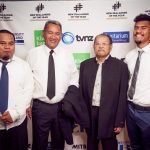 They began asking locals what would improve their place … a few years later Randwick Park has won 2017 community of the year. Maree Beaven recently talked to us about what they’ve achieved so far and how.
They began asking locals what would improve their place … a few years later Randwick Park has won 2017 community of the year. Maree Beaven recently talked to us about what they’ve achieved so far and how.
Randwick Park has also very kindly shared their story to be apart of our 2017 election manifesto please feel free to read it, and share it.

